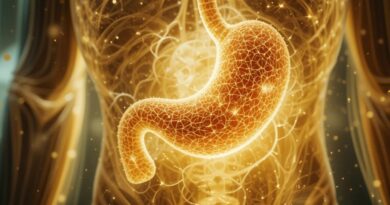How Researchers Are Reversing Ageing at the Cellular Level
Something extraordinary is happening in the hallowed corridors of Harvard Medical School, a feat that would have seemed like pure fantasy just yesteryear. Elderly mice, their fur grey and movements sluggish, are literally growing younger. Their skin tightens, their vision sharpens, and their muscles regain strength—not through surgery or drugs, but through a revolutionary technique that rewinds their biological clocks at the cellular level.
This isn’t science fiction. It’s the groundbreaking work of Dr David Sinclair and his team at the Sinclair Laboratory, where researchers have achieved what many thought impossible: the actual reversal of ageing in living mammals. The implications stretch far beyond laboratory walls, potentially reshaping how we think about human longevity, healthcare, and the very nature of growing old.
The Epigenetic Clock: Time’s Hidden Mechanism
To understand how scientists are reversing ageing, we must first grasp what ageing actually is at the molecular level. For years, researchers believed ageing was primarily caused by accumulated genetic damage—mutations in our DNA that pile up like rust on a car. However, recent research published in the prestigious journal Cell has revealed that epigenetic changes are a major cause of mammalian ageing.
Think of your DNA as a vast library, and epigenetics as the system that determines which books get read and when. As we age, this organisational system becomes increasingly chaotic. Genes that should be active fall silent, while others that should remain dormant spring to life inappropriately. This epigenetic drift manifests as the hallmarks of ageing we all recognise: wrinkled skin, declining muscle mass, cognitive decline, and increased susceptibility to disease.
The discovery of the epigenetic clock has been revolutionary in ageing research. Unlike chronological age—how many years you’ve been alive—your epigenetic age reflects how much biological ageing your cells have experienced. Some people have epigenetic ages younger than their chronological age, whilst others appear biologically older. This variation explains why some 70-year-olds run marathons whilst others struggle with daily activities.
The Yamanaka Revolution: Reprogramming Cells to Youth
The key to Sinclair’s breakthrough lies in the work of Nobel Prize winner Shinya Yamanaka, who discovered four transcription factors—Oct4, Sox2, Klf4, and c-Myc—that can reprogram adult cells back into embryonic-like stem cells. These “Yamanaka factors” essentially reset a cell’s identity, returning it to a pluripotent state where it can become any type of cell in the body.
However, using all four factors poses a significant problem: they don’t just reset the epigenetic clock; they completely erase cellular identity, potentially causing dangerous tumour formation. Sinclair’s team made a crucial discovery: using just three of the four factors—Oct4, Sox2, and Klf4 (OSK)—could restore youthful DNA methylation patterns and tissue function without erasing cellular identity.
This partial reprogramming approach is like performing a careful restoration of an antique car. Rather than stripping it down to bare metal (which would destroy its character), the process selectively repairs damage whilst preserving the vehicle’s essential identity. The result is a car that runs like new but maintains its original purpose and characteristics.
From Laboratory to Living Tissue: The Mouse Studies
The practical application of this discovery has yielded remarkable results in animal studies. In Sinclair’s laboratory, old mice are literally growing young again, with aging cells being reset to earlier versions of themselves. The transformations observed go far beyond cosmetic changes.
When researchers examined the treated mice at the molecular level, they found comprehensive rejuvenation. The animals’ skin became more elastic and showed fewer signs of damage. Their muscle mass increased, and their strength improved dramatically. Perhaps most remarkably, cognitive function improved, with older mice performing learning and memory tasks at levels comparable to young adults.
Independent research teams have replicated these findings, with treated animals living an average of 18 weeks longer than control groups whilst partially regaining DNA methylation patterns typical of younger animals. The consistency of results across multiple laboratories suggests the underlying science is robust and reproducible.
Chemical Cocktails: The Next Frontier
Whilst the genetic approach using OSK factors shows promise, researchers have developed high-throughput cell-based assays to screen for molecules that can reverse cellular ageing without altering the genome. This chemical approach could prove more practical for human applications, as it avoids the complexities and potential risks of gene therapy.
The search for anti-ageing compounds has identified several promising candidates, including DNA methyltransferase inhibitors and histone deacetylase inhibitors. These molecules work by modifying the epigenetic landscape, essentially cleaning up the accumulated “noise” that interferes with proper gene expression as we age.
Human Applications: From Promise to Practice
The transition from mouse studies to human applications represents both the greatest opportunity and the most significant challenge in ageing research. Early human studies have already shown encouraging results, though using less dramatic interventions than the genetic reprogramming techniques used in mice.
A randomized controlled clinical trial involving 43 healthy men aged 50-72 demonstrated that an 8-week program combining diet, sleep, exercise, relaxation guidance, and targeted supplements could reverse epigenetic age. Whilst the intervention was lifestyle-based rather than involving direct cellular reprogramming, it demonstrated that epigenetic age reversal is achievable in humans.
More ambitious approaches are on the horizon. The U.S. government has allocated $1.5 billion towards research focused on epigenetic reprogramming technology, signalling serious institutional commitment to translating laboratory discoveries into clinical reality.
The Societal Implications: A World Without Ageing?
The prospect of dramatically extending human healthspan—the period of life spent in good health—raises profound questions about the structure of society itself. If people could remain physically and mentally vigorous well beyond current lifespans, fundamental assumptions about career progression, retirement, family structures, and resource allocation would require complete reconsideration.
The economic implications alone are staggering. Current healthcare systems strain under the burden of age-related diseases, which account for the majority of medical spending in developed countries. If people could maintain youthful physiology for decades longer, the reduction in healthcare costs could be enormous. However, this assumes equitable access to anti-ageing treatments—a significant assumption given the likely high costs of cutting-edge therapies.
The equity question looms large over the entire field. Will life extension technologies exacerbate existing inequalities, creating a world where the wealthy can purchase additional decades of youth whilst others age normally? The social tensions this could create are difficult to overstate, potentially leading to new forms of discrimination based on biological rather than chronological age.
Current Limitations and Future Directions
Despite the promising results in animal studies, significant hurdles remain before epigenetic reprogramming becomes a clinical reality for humans. The complexity of human biology means that interventions successful in mice don’t always translate directly to human applications. Additionally, long-term safety studies are essential—the last thing researchers want is to cure ageing only to discover serious side effects decades later.
Current research is focusing on several key areas: developing more precise methods for targeting specific tissues, creating safer delivery mechanisms for therapeutic factors, and establishing robust biomarkers for measuring the effectiveness of interventions. Clinical trials in humans are proceeding cautiously, beginning with applications for specific age-related diseases rather than general life extension.
The Ethical Landscape
The potential to extend human life significantly raises ethical questions that humanity has never before had to confront seriously. Traditional concepts of natural lifespan, the meaning of mortality, and intergenerational relationships all come under scrutiny when ageing becomes optional rather than inevitable.
Religious and philosophical traditions have long found meaning in the finite nature of human existence. If that finitude becomes a choice rather than a biological inevitability, how might this affect human psychology, motivation, and spiritual development? Some argue that knowing our time is limited gives life its urgency and meaning. Others contend that eliminating the suffering associated with ageing is an unqualified good that would allow people to pursue fulfilment without the shadow of physical decline.
There are also questions about consent and autonomy. Should parents be able to make decisions about life extension treatments for their children? What about individuals with cognitive impairment who cannot make informed decisions about potentially life-altering therapies?
Looking Ahead: The Next Decade
The Sinclair laboratory believes that the pace of ageing is not inexorable but can be slowed and even reversed through various approaches, potentially treating both rare and common diseases. This optimism is shared by many researchers in the field, who see the current decade as crucial for translating laboratory discoveries into practical applications.
The immediate focus remains on safety and efficacy in human trials. Researchers are particularly interested in applications for specific age-related conditions—such as macular degeneration, osteoarthritis, and cognitive decline—where the risk-benefit calculation may favour earlier intervention than general life extension treatments.
Technological advances in delivery mechanisms, such as more precise gene therapy vectors and improved small molecule formulations, are making human applications increasingly feasible. The development of better biomarkers for biological age will also be crucial for monitoring treatment effectiveness and optimising interventions for individual patients.
Conclusion: Standing at the Threshold
We stand at what may be the most significant threshold in human history—the potential transition from ageing as an inevitable biological process to ageing as a treatable condition. The research emerging from laboratories like Sinclair’s suggests that the fundamental mechanisms of ageing are not immutable laws of nature but biological processes that can be understood, modified, and potentially reversed.
The implications extend far beyond individual health and longevity. Success in this endeavour could reshape society as profoundly as the agricultural revolution, the industrial revolution, or the digital revolution. The choices we make about how to develop, regulate, and distribute these technologies will help determine whether extended human lifespans become a source of unprecedented human flourishing or new forms of inequality and social tension.
What seems certain is that the conversation about human ageing and longevity is no longer purely theoretical. The mice growing young again in Harvard’s laboratories are harbingers of possibilities that seemed like fantasy just a generation ago. Whether those possibilities become reality—and what form that reality takes—depends on the scientific, ethical, and policy choices made in the crucial years ahead.
The fountain of youth, it turns out, may not be a mythical spring but rather a deeper understanding of the biological processes that govern our cells’ relationship with time itself. The question is no longer whether we can reverse ageing, but whether we should—and if so, how we can do it in a way that benefits all of humanity rather than just the fortunate few.
We’d love your questions or comments on today’s topic!
For more articles like this one, click here.
Thought for the day:
“Donald Trump has got unlimited number of insecurities. But the No. 1 one thing, I would say, is his insecurity with his intellect. There’s a reason why he always refers to where he went to college and, you know, that, ‘I’m a smart person.’ You know, it may be narcissism. But I think it really reflects an insecurity.” Mark Cuban



